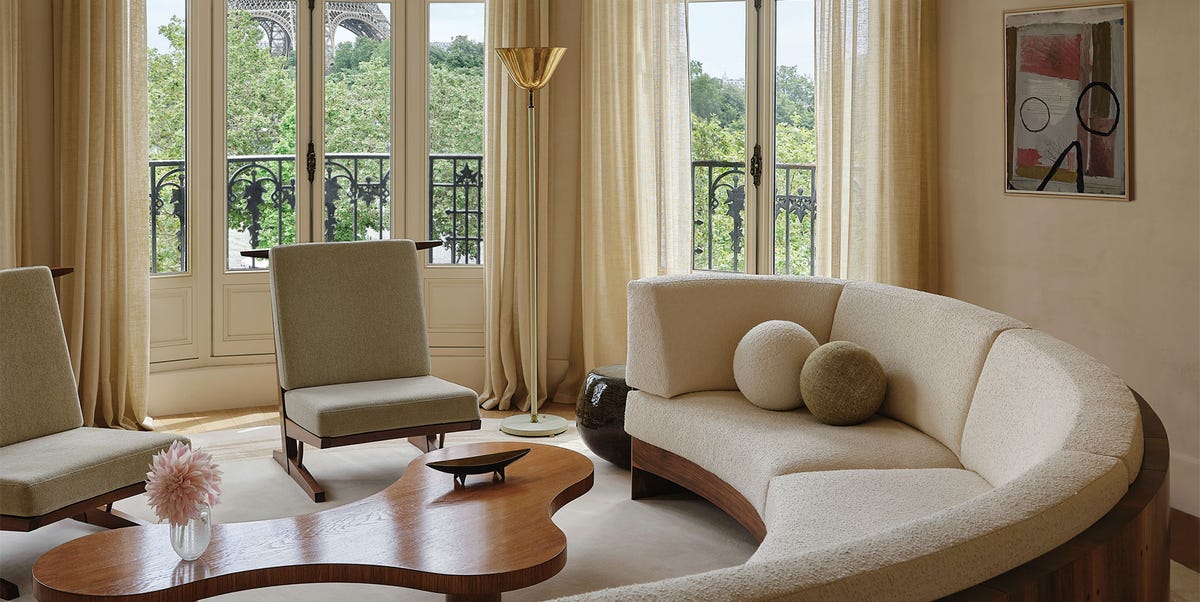Popular interior home design ideas 2023
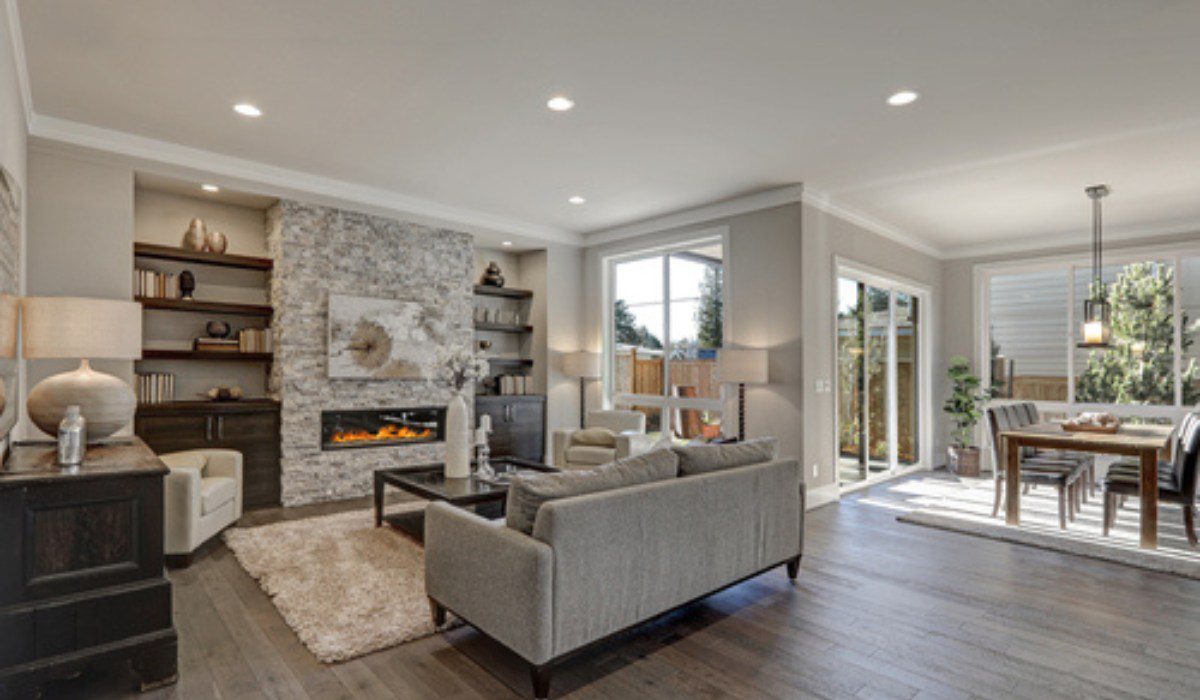
You may transform a room entirely by adding something as easy as an accent wall, a bright lightbulb, or a new throw cushion to give it a modern, stylish, and up-to-date vibe. What’s best? Even though the entire look will appear to have taken much longer to complete, you can complete each of these home decor in a single day. To give your house a fresh new look, these ideas for interior design have been meticulously picked. Discover trends in home design that are as inspirational as they are ptactical.
To get you started, we come up with some exciting interior home design ideas.
12 interior home designs to consider in 2023
Modern interior home design
A modern interior design style is characterised by uncomplicated colour schemes, a homey atmosphere, clean individual features, and extensive use of glass and steel. The paintings and sculptures are selected with logic and practicality in mind. The living areas feature open floor plans and simple decor.
In a modern home, accent lighting is incorporated to draw attention to particular objects, architectural details, sculptures, etc. The main goal of modern design is to provide uncomplicated, clutter-free dwellings devoid of extraneous decorations. Most décor elements, notably the furnishings, lean toward minimalism in this style. Nothing is too audacious or loud.
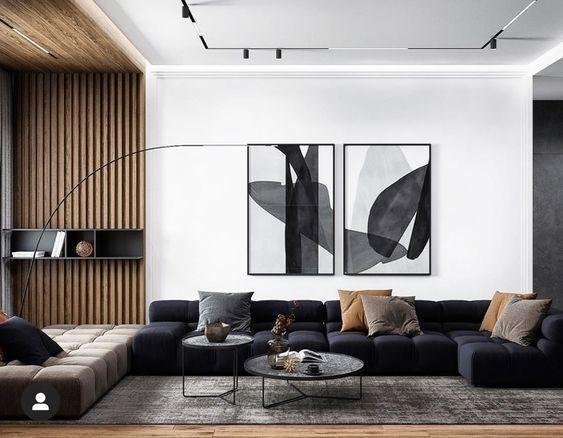
Source: Pinterest
Contemporary interior design style
An interior design style referred to as contemporary relates to current trends that are popular right now. Modern living more closely resembles contemporary interior design, which draws inspiration from all previous design trends, including austerity, modernity, art deco, and even earlier design eras.
Modern homes typically use a lot of natural light and have open floor designs. The emphasis is heavy on energy conservation and the use of recycled or eco-friendly materials. Typically, neutral colours with a touch of exuberance are chosen. In a home decorated in a contemporary manner, modern furniture predominates. Lighting fixtures from diverse eras have been chosen to enhance the living area.
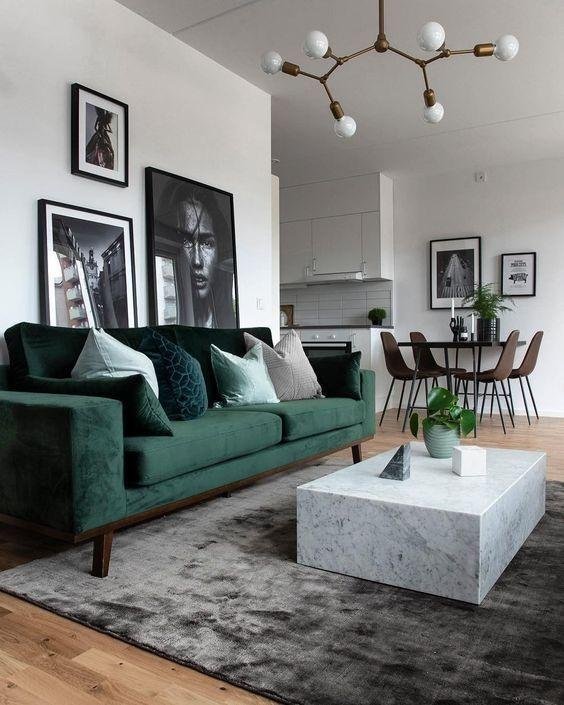
Source: Pinterest
Mid-century interior home design
This is an interior design style that spanned the 1940s and 1960s. The emphasis of this interior design style was on the vibrant use of colour, just like it was the vogue in practically every element of life at the time, from the walls to the wall art to the furniture. Everything was vibrant during this time. Crisp lines characterised the furniture, and there were numerous indoor plants. After World War II, austerity and functionality were the main design motifs in dwellings, as they were symbolic of the time. Mid-century modern architecture offers a vintage vibe with a modern twist. If you are a highly social person who wants to strengthen relationships with others, choose this home design trend.
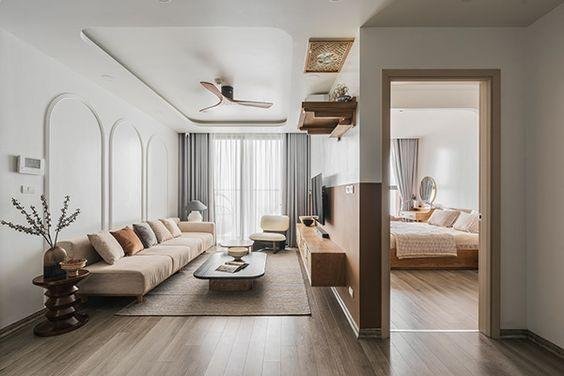
Source: Pinterest
Minimalist interior home design
Australia is where the minimalist home design trend first gained popularity. The minimalist aesthetic is emphasised in all facets of interior design, including basic furnishings, neutral colour schemes, and useful but understated accessories. Everything is simplified, basic, and essential. The minimalist interior gives your home a more earthy and clean look.
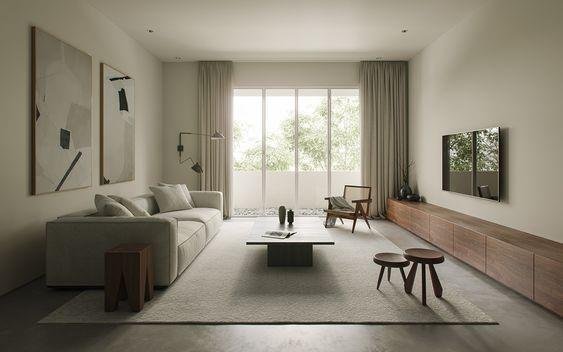
Source: Pinterest
Scandinavian-inspired design with clean lines and cosy accents
The Scandinavian interior design aesthetic is a synthesis of numerous design eras from the 20th century. The Scandinavian design emphasises simplicity, usefulness, and a minimalistic interior. It also embodies clear and simple spaces that are useful. The emphasis on cost, rather than just necessity, distinguishes it from minimalist designs. The majority of décor consists of modest ornamentation, rounded furniture, natural and clean detailing, and a predominance of black and white. Additionally, it is distinguished by simple groupings and layouts. You might describe it as a fusion of mid-century and minimalist designs.
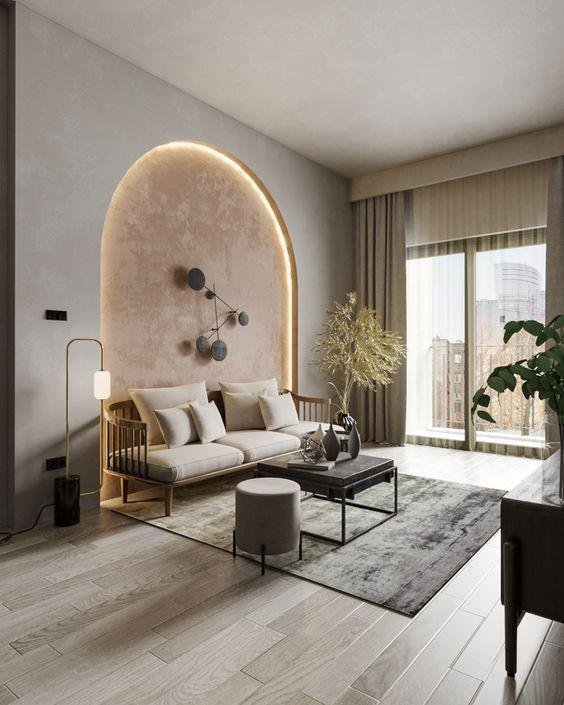
Source: Pinterest
Shabby chic interior home design
The shabby chic style is distinguished by a relaxed atmosphere, open lighting fixtures, vintage appeal, and furniture with an antiqued finish. Although it contains certain features of contemporary design, it is inspired by older designs, where the house makes use of components that seem worn out and outdated but are very useful. To make something look old, new objects are purposely weathered.
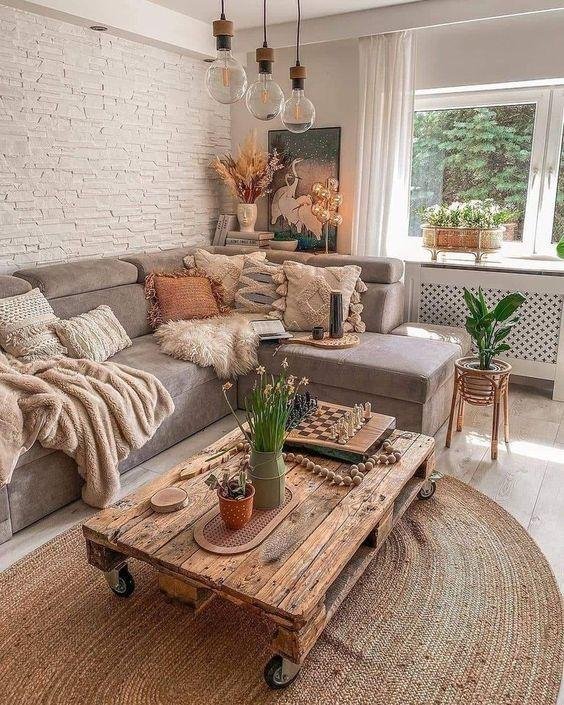
Source: Pinterest
Eclectic interior home design
Picking ideas and inspiration from a wide variety of sources is the essence of eclecticism. With inspiration drawn from design eras and styles that span centuries, the eclectic interior design style creates houses that are rich and nuanced. For a distinctive feel, this style combines contrasting design elements, colours, and materials.
People who like bold décor and artistic expression typically choose this. Multiple focus points are used in eclectically styled rooms, and colours and textures are balanced to avoid overpowering the eye. The main principle of eclectic design is to combine all previous aesthetic trends to produce something new, fascinating, and enthralling. It all comes down to creativity and the capacity to think freely and creatively.
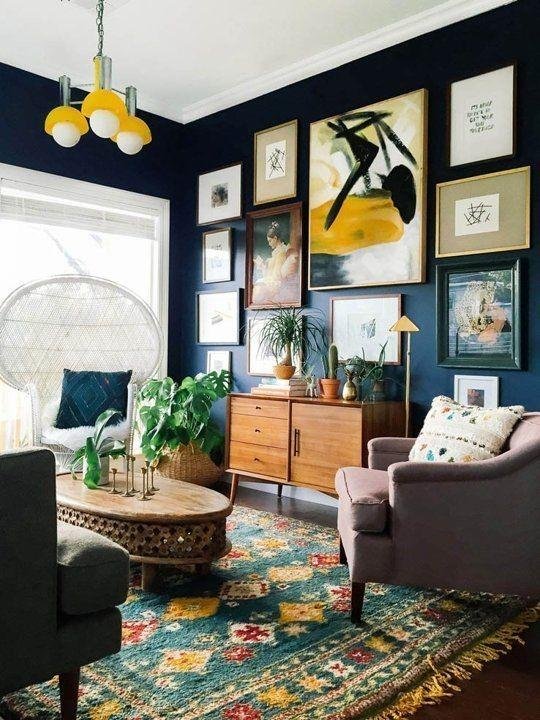
Source: Pinterest
Minimalist style with a touch of industrial elements
Industrial interior design is a balanced fusion of fashion and function. An industrial-style home, as the name implies, reveals construction elements that are typically hidden, such as bare brick walls, pipes, and repurposed materials. Element snippets from factories, industries, and warehouses can be found in homes decorated in an industrial design.
The furniture is placed in these homes’ open floor designs to divide the room. Since it relies on a neutral colour scheme, natural materials, and a few industrial components, it is one of the simplest interior design trends to execute. The fundamental principle of industrial interior design is the fusion of other design philosophies with components from factories and industries to provide a look that is personalised for the homeowner.
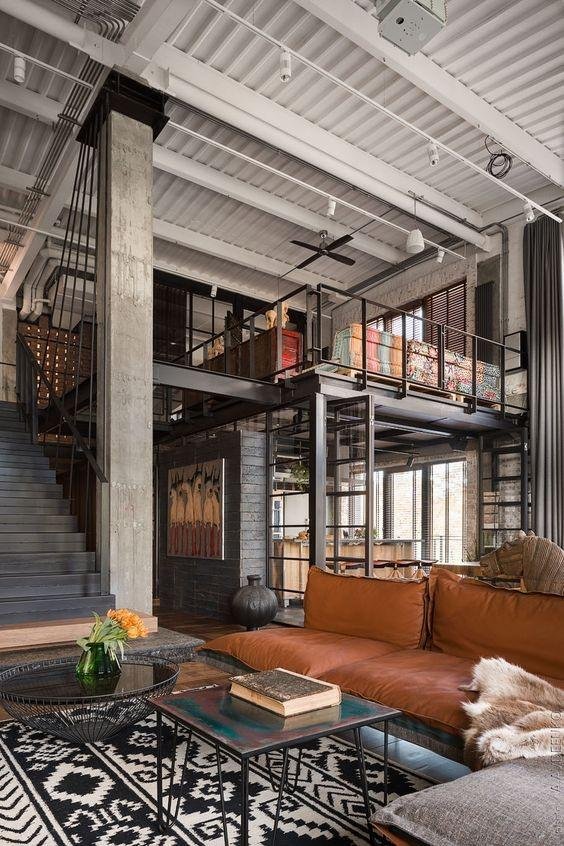
Source: Pinterest
Modern bohemian chic with bold colours and patterns
The Boho interior design style is a symbol of unconstrained aesthetics that blends culture and cultural expressions to create a variety of styles. Its relaxed ambience is rooted in nature and features some striking patterns and vibrant colours in its accents and cabinetry. Less emphasis is placed on maintaining perfect order, and mixing patterns and colours is encouraged.
Animal skins, metallic accents, and rich timber streamline it. It favours plush materials like Malian slush-clothed gambling cushions and hand-woven Moroccan hairpieces with Japanese block designs. Natural embellishments, shade, and rich greenery are some of its other noteworthy characteristics.

Source: Pinterest
Rustic farmhouse charm with natural textures and materials
Natural traces, artificial accents, and a country charm are all distinguishing features of rustic home design. It was founded as a reaction to the Romantic Movement and emphasised the elegance and simplicity of nature. It’s not surprising that the design tends to be minimal, androgynous, and functional. It has a stronger preference for raw wood, stones, natural and aged home stretches, and leather. Since a fireplace is based on functionality, it is frequently used as a statement piece. By including raw flavour ornamentation on the bookcases or reading nooks, one can achieve the look in their desired home.
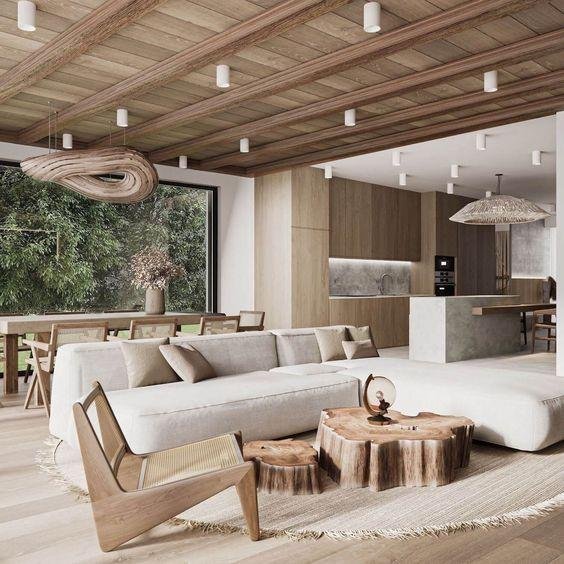
Source: Pinterest
Traditional interior home design
Traditional interior design is a timeless design trend that draws inspiration from many 18th and 19th-century styles. The conventional style is symmetrical and consistent, not as flamboyant as many other interior designs, but also not boring.
Old-world artefacts with fascinating backstories are commonly found in traditional homes and make for fascinating discussion starters. Rich fabrics and colours are widely used, with brightness and symmetry serving as the traditional style’s main themes. The main goal of the classic design aesthetic is to generate a warm and welcoming space.
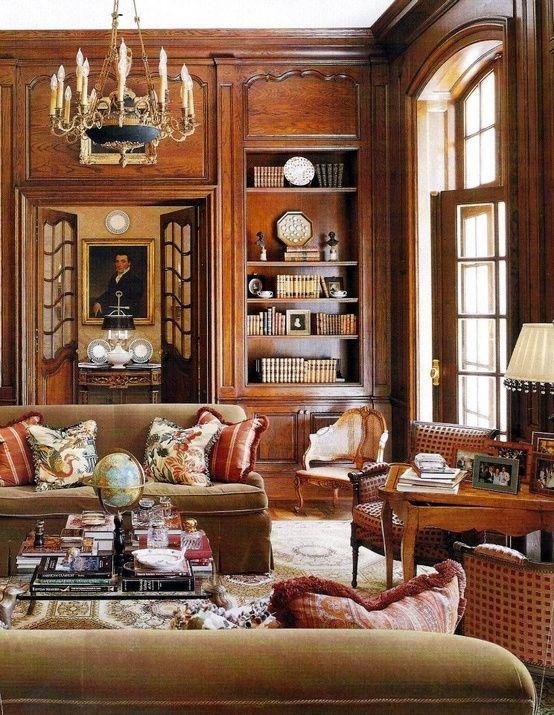
Source: Pinterest
Transitional interior design style
Transitional interior design is a contemporary interpretation of historic design elements, creating an intriguing contrast between traditional and contemporary interior decorating styles. The millennial age prefers this type of interior design because it visually balances the masculine and feminine features.
Simple architecture, clean lines, clear focus points, metallic accents, and lots of texture are some features of a transitional house. The main goal of the transitional design is to give a house a historic yet contemporary vibe. The secret is finding the ideal balance between the two that secretly complements the personality of the occupants of the house.
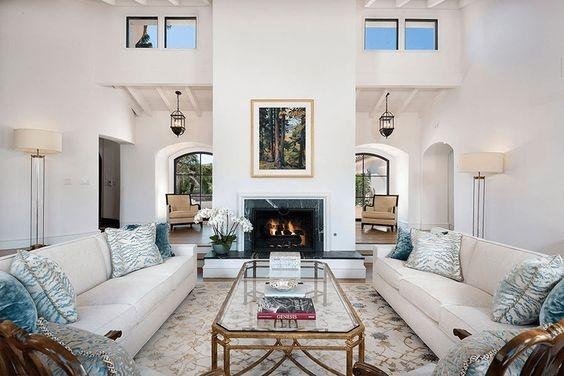
Source: Pinterest
How to choose interior home design for your space?
Here’s a guide to help you choose the perfect interior design style for your home:
- Reflect on your preferences: Take a moment to consider your personal preferences, lifestyle and the mood you want to create in your home. Do you lean towards minimalism, or do you prefer vibrant and eclectic decor? Your preferences will guide you towards the right style.
- Evaluate your space: Consider the architectural features, layout and size of your home. Some styles, like minimalism, work well in smaller spaces, while others like industrial may need more open areas. Choose a style that complements your space’s inherent characteristics.
- Gather inspiration: Browse interior design magazines, websites, social media platforms and even visit showrooms to collect inspiration. Save images of rooms that resonate with you and align with your vision.
- Consider existing furnishings: If you have existing furniture or decor items that you love, choose a style that seamlessly integrates with them. Alternatively, you might want to start fresh with a complete style overhaul.
- Colour palette: Think about the colour palette that appeals to you. Different styles have distinct colour schemes – from the soothing neutrals of Scandinavian design to the bold hues of bohemian style.
- Texture and materials: Pay attention to the textures and materials that define your preferred style. Whether it’s the warmth of wood in rustic interiors or the clean lines of metal in industrial design, these elements contribute to the overall feel.
- Functionality matters: Ensure that the chosen style aligns with your lifestyle and meets the functional needs of your home. A family-friendly style might focus on durability, while a serene style could emphasise relaxation.
- Cohesive flow: Consider how your chosen style will flow from room to room. While each room can have its unique touch, maintaining a cohesive theme throughout your home creates a balanced and harmonious atmosphere.
- Personal touch: Infuse your personality into the chosen style. Add personal touches through artworks, accessories and decor items that hold sentimental value.
- Consult professionals: If you’re unsure or overwhelmed, seeking guidance from interior designers or decorators can be beneficial. They can provide expert advice and help you bring your vision to life.
FAQs
Does old furniture fit in a modern house?
The best way to create a harmonious fusion of vintage and modern decor is to keep the heights, textures, and finishes in check.
What do you need to consider when designing home interiors?
The secret to designing an aesthetically beautiful interior is to balance interior design aspects, which include space, line, forms, light, colour, texture, and pattern.
link



